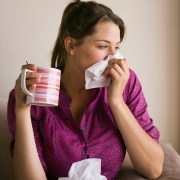Adolescents and young adults less than 25-years-old get at least half of all new HIV infections in the United States and worldwide, according to some estimates. The vast majority of new cases are believed to occur through sexual activity. Men who have sex with men (MSM) and women from minority ethnic groups are at highest risk. The Connect to Protect (C2P) project of the Adolescent Medicine Trials Network for HIV/AIDS has a goal of reducing infection rates in urban youth. Current participants include 15 major urban areas: Baltimore, Boston, Bronx (New York), Chicago, Ft. Lauderdale, Manhattan (New York), Los Angeles, Miami, New Orleans, Philadelphia, San Diego, San Francisco, San Juan (Puerto Rico), Tampa, and Washington, D.C.
Most intervention programs focus on individual behavior, such as condom use, medical exams, and fewer sex partners. The Connect to Protect project is based on the idea that interventions aimed at the community may be more sustainable. One of the steps in this project is the selection of venues where young people at risk can be tested, treated, and educated. The venues selected include clubs and bars for men, and commercial and service-oriented areas for women.
Results of the testing program were reported in the March 2010 Archives of Pediatric and Adolescent medicine. The project identified 93 HIV-infected men (15.3 percent of the total men), and two HIV-infected women (0.3 percent of the total women). These numbers are consistent with other studies for men, but about half the previously reported rates for women. The authors conclude that venue-based testing is successful in identifying young men with HIV infection, but more work needs to be done to identify young minority women with HIV.
Of the men who tested positive, only two reported themselves as heterosexual; 85 reported sex with men. Data for the remaining six are unavailable. Risk factors of sexual activity and drug use were similar in the HIV-infected and uninfected groups. Only three of the infected men were in the age group 12 to 17 years; the remaining 90 were age 18 to 23. Demographic information was not reported for the two women who tested positive.
The Connect to Protect project offers more information on its website, at http://www.adolescentaids.org/c2p.html
References:
1. Ziff MA et al, “Adolescent Medicine Trials Network for HIV/AIDS Intervention. Laying the foundation for Connect to Protect: a multi-site community mobilization intervention to reduce HIV/AIDS incidence and prevalence among urban youth”. J Urban Health 2006; 83(3): 506-522.
2. Barnes W et al, “Identification of HIV-infected 12- to 24-year-old men and women in 15 US cities through venue-based testing”, Arch Pediatr Adolesc Med. 2010 March; 164(3): 273-276.
Linda Fugate is a scientist and writer in Austin, Texas. She has a Ph.D. in Physics and an M.S. in Macromolecular Science and Engineering. Her background includes academic and industrial research in materials science. She currently writes song lyrics and health articles.






Add a CommentComments
There are no comments yet. Be the first one and get the conversation started!